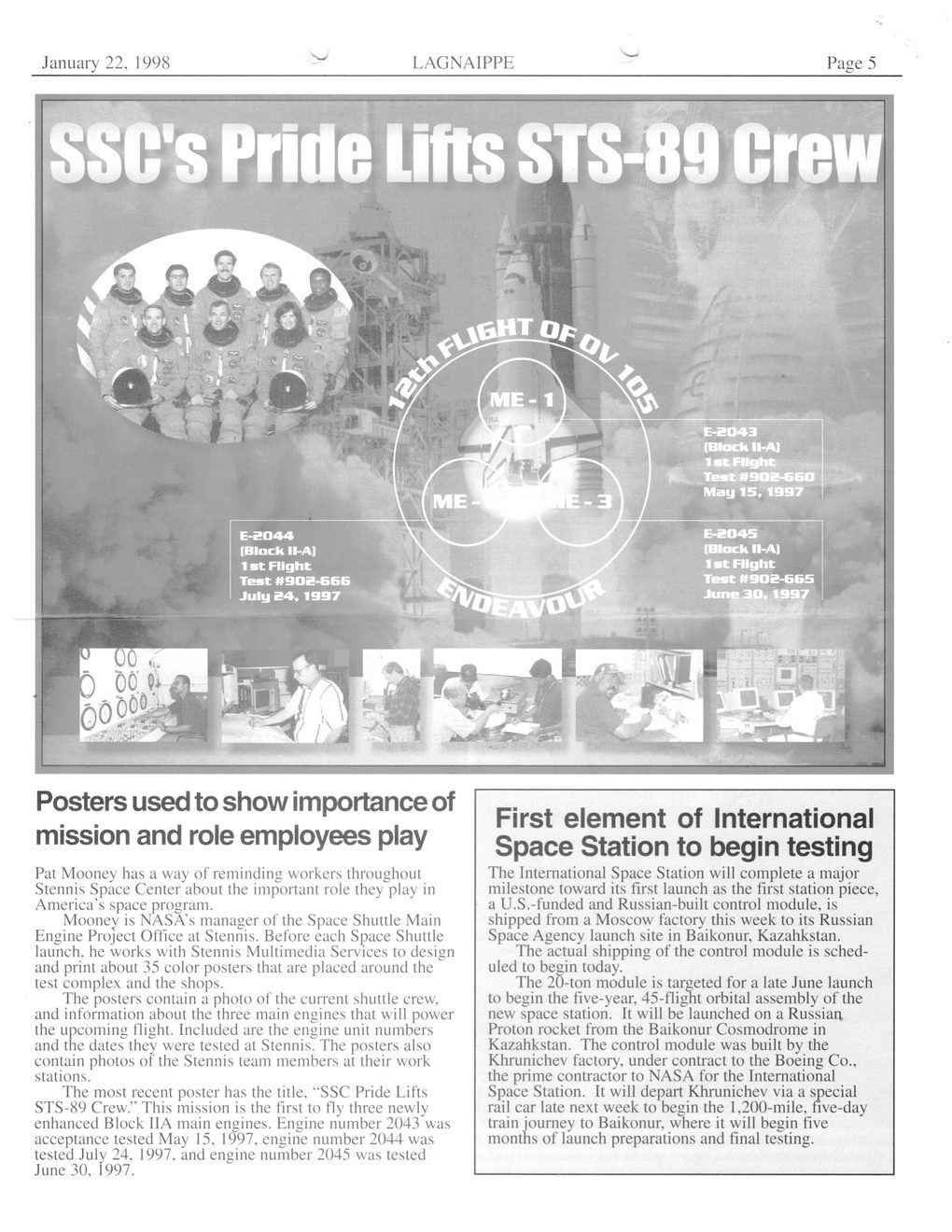This text was obtained via automated optical character recognition.
It has not been edited and may therefore contain several errors.
January 22, 1998 LAGNAIPPE Page 5 SSC's Pride lifts STS-89 Crew i* v"” o' * E-SD44 (Block ll-A) 1 it Flight Test #903-666 July 84, 1997 E-B043 (Black ll-A] latFUght Test #902-660 May 15, 1997 E-2045 (Block ll-A) 1 at Flight Test #903-665 June 30, 1997 Posters used to show importance of mission and role employees play Pat Mooney has a way of reminding workers throughout Stennis Space Center about the important role they play in America’s space program. Mooney is NASA’s manager of the Space Shuttle Main Engine Project Office at Stennis. Before each Space Shuttle launch, he works with Stennis Multimedia Services to design and print about 35 color posters that are placed around the test complex and the shops. The posters contain a photo of the current shuttle crew, and information about the three main engines that will power the upcoming flight. Included are the engine unit numbers and the dates they were tested at Stennis. The posters also contain photos of the Stennis team members at their work stations. The most recent poster has the title, “SSC Pride Lifts STS-89 Crew.” This mission is the first to fly three newly enhanced Block IIA main engines. Engine number 2043 was acceptance tested May 15, 1997, engine number 2044 was tested July 24, 1997, and engine number 2045 was tested June 30, 1997. First element of International Space Station to begin testing The International Space Station will complete a major milestone toward its first launch as the first station piece, a U.S.-funded and Russian-built control module, is shipped from a Moscow factory this week to its Russian Space Agency launch site in Baikonur, Kazahkstan. The actual shipping of the control module is scheduled to begin today. The 20-ton module is targeted for a late June launch to begin the five-year, 45-flignt orbital assembly of the new space station. It will be launched on a Russian. Proton rocket from the Baikonur Cosmodrome in Kazahkstan. The control module was built by the Khrunichev factory, under contract to the Boeing Co., the prime contractor to NASA for the International Space Station. It will depart Khrunichev via a special rail car late next week to begin the 1,200-mile, five-day train journey to Baikonur, where it will begin five months of launch preparations and final testing.

NASA Document (019)